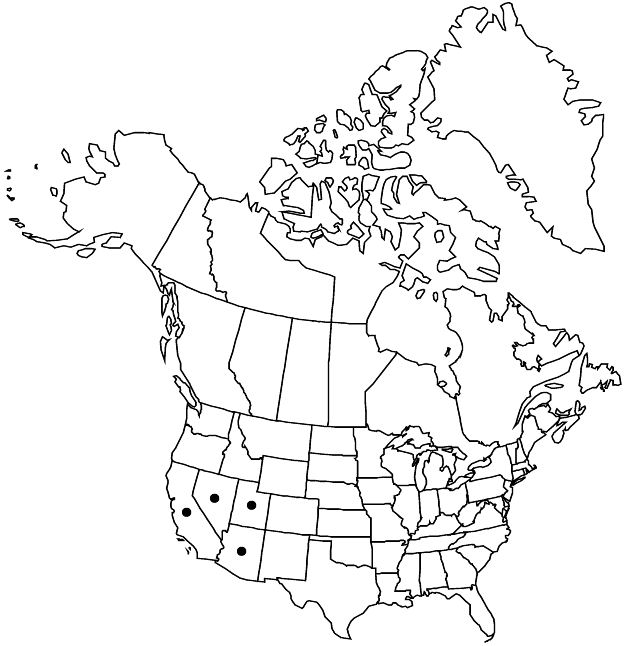Eremalche exilis
Leafl. Bot. Observ. Crit. 1: 208. 1906.
Plants prostrate to decumbent; stems sometimes flushed with purple-maroon, branched or unbranched, 2–40 cm, obscurely stellate-hairy. Leaf blades 3- or 5-cleft or -lobed to ± 1/2 to base, 1–2.5 cm wide, divisions entire or 3-toothed at tip. Inflorescences seldom exceeding leaves, sometimes basal. Pedicels 0.2–1 cm, longer in fruit; involucellar bractlets threadlike to linear, 3.3–5.5(–7) mm. Flowers: calyx 4–5.5(–7) mm, lobes 3–5 × 1.5–2.5 mm; petals white or pale rose-lavender, 4–5.5 mm, equaling calyx. Mericarps 9–13, brownish to blackish, ± wedge-shaped, cushionlike, 1.4–1.8 mm, margins rounded, radially corrugated. 2n = 20, 40.
Phenology: Flowering late winter–spring.
Habitat: Sandy or rocky desert soil
Elevation: 100–1500 m
Distribution

Ariz., Calif., Nev., Utah, Mexico (Baja California, Sonora).
Discussion
Eremalche exilis occurs in the Mojave and Sonoran deserts.
Selected References
None.